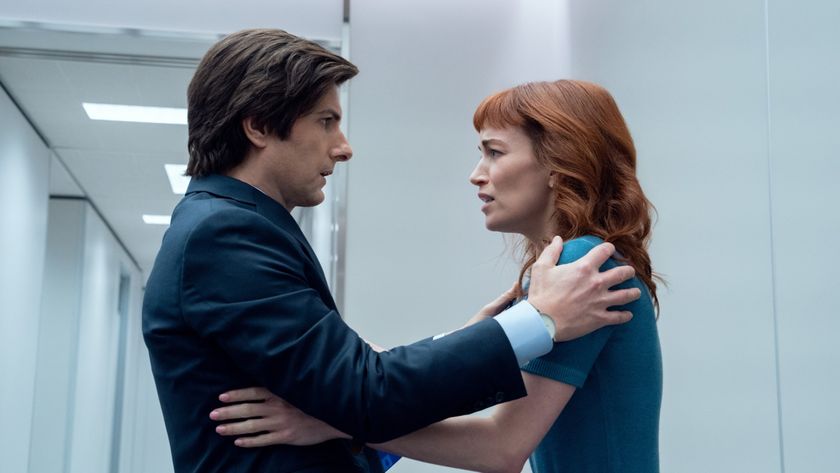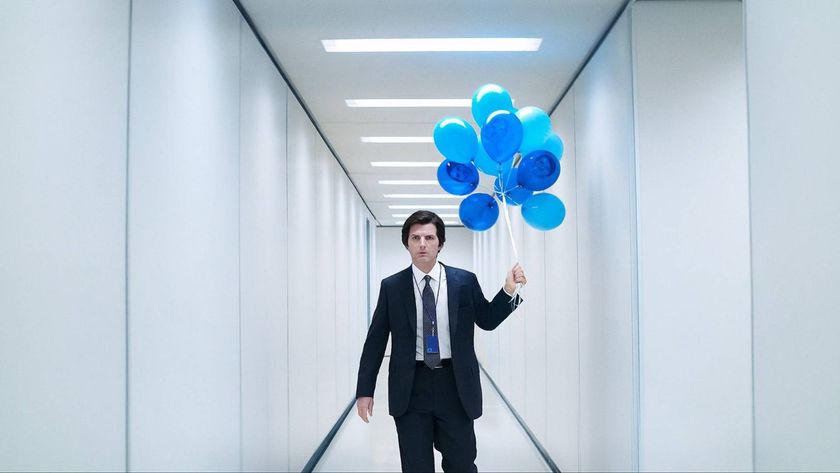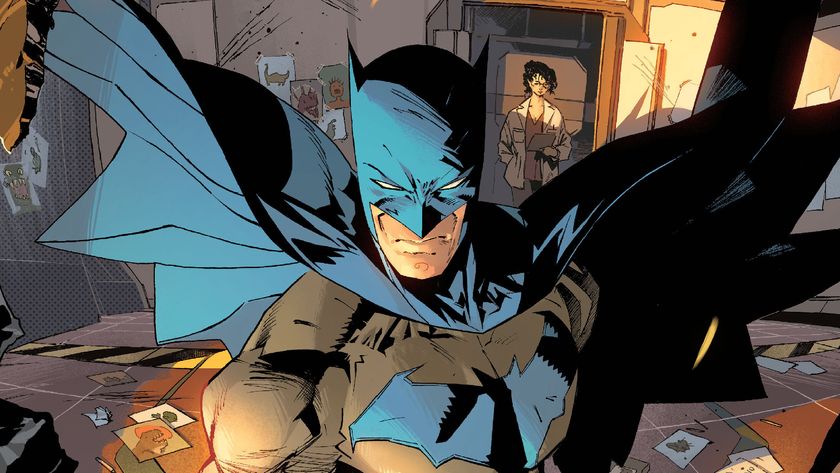Every Star Trek Discovery Easter egg and hidden reference you might have missed
Impress your friends with every Star Trek Discovery Easter egg from season 2 so far
Screen burn
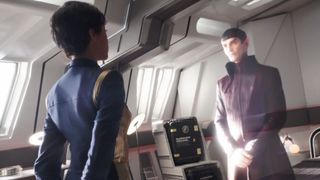
Pike: “The damn holographic comm system. Tell Louvier to rip out the entire system. From now on we’ll communicate using good old-fashioned view screens.”
Really, Discovery? Really? That’s what you’re going with to explain away why no one uses the hologram tech in the Original Series, despite it clearly having been invented. Well, OK. Then again, maybe it’s like a VR - a comparatively old technology that has yet to have its moment in the sun.
Caught in a web
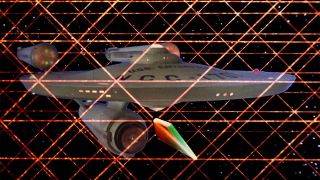
“Whatever has us we’re locked into place, like a damn fly in the web.” While this isn't a direct reference, it sure feels like a nod to a Original Series episode The Tholian Web, which similarly finds the Enterprise trapped by a gigantic space thing.
Starbase is the place
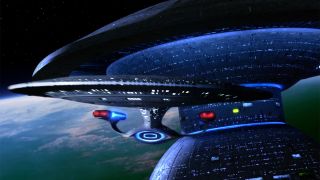
Saru makes reference to having spent time on Starbase 7. This is the first time he has gone in depth into his past, though viewers of the Short Treks will already have seen some of these events. If you’re keen to get up to speed, then these mini-episodes are available in the UK. Here's how to watch the Star Trek Short Treks.
While this episode is the first time that this particular Starbase has been mentioned on screen, it does show up in some of the books and comics. We know from these that it is the only Starbase in the Andor sector and, according to Brad Ferguson’s Crisis on Centaurus, largely serves as a supply base for Federation starships on the Romulan border. Decades after Saru spent time on Starbase 7, Montgomery Scott will take a vacation there - and end up being implicated in a plot to destroy the base.
Have you turned it off and on again?
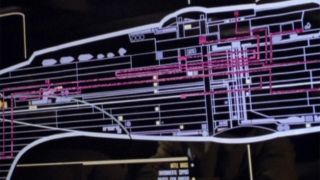
If you’re wondering why a quick reference to the Discovery’s EPS grid sounded familiar, it’s because it’s been mentioned in numerous episodes of The Next Generation, Voyager, and Enterprise. This is a part of the electro-plasma distribution network - i.e. the bit that supplies power to different parts of a Starfleet ship - that, in an emergency, can be shut down.
Talk to FRANK
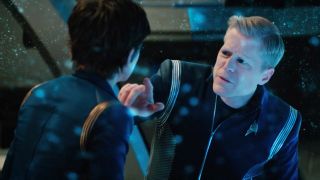
In this episode, Stamets gives both Reno and himself a shot of Impedrizine. Bit weird - previously in Star Trek it’s been described as a drug that’s used to treat plasma burns - but presumably he knows what he’s doing.
Sign up to the SFX Newsletter
Get sneak previews, exclusive competitions and details of special events each month!
Episode 3
In the Captain's chair

Three episodes in and Anson Mount is absolutely killing it as Pike. And it certainly has not escaped our attention that when we see him in the Captain’s chair this week, he’s affecting the pronounced lean that James T Kirk would go on to adopt. Perhaps Jim saw Pike do it and thought it looked cool enough to copy when he finally took command of the Enterprise.
Hair today...
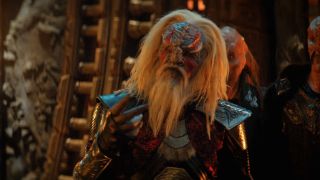
Remember all of the fuss about the redesign of the Klingons last season? Well, season 2 is clearly going to some effort to mollify fans. In the early scenes featuring the Klingon council, we see a range of different looks. L’Rell has begun growing her hair out, but it’s Kol-Sha’s flowing locks that most recall the traditional Klingon look. Sad to think that he dies in this episode without knowing that he’s at the bleeding edge of old school Klingon-style.
D7-th heaven

The biggest “Oooh, take a look at that!” moment for fans this episode is the hologram of a Klingon D7 battlecruiser in those early council scenes. This is the classic Klingon starship, as faced by Kirk and co in the Original Series (where it first appears in the episode Elaan of Troyius) and some of the movies. Now we know that it was championed by L’Rell as a symbol of the 24 united Klingon houses, with production overseen by Tyler.
The ship that Lorca was picked up by in season 1’s Choose Your Pain was also designated a D7, but looked nothing like this - perhaps that model was retired for looking a bit rubbish. Whatever the case, the D7 proves to be such a popular and effective ship design that the Klingons later share it with the Romulans. And no wonder! The D7 is a gorgeous bit of design and we can’t wait to see it properly in action, hopefully soon…
Monk-y business
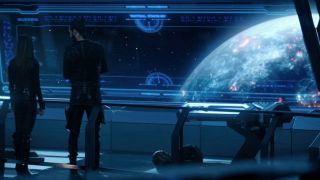
At the end of the episode, Tyler and Georgiou take L’Rell and Voq’s son to Boreth, a planet inhabited by an order of Klingon monks. Decades later, Worf visits the planet to learn more about his Klingon heritage in The Next Generation’s Rightful Heir, where he also ends up meeting a clone of Kahless. It’s also said that he returns to the planet for a time after he leaves the Enterprise D and before he is stationed at Deep Space 9.
Episode 2
Infinite diversity, infinite merch opps?

We didn’t spot this in the updated title sequence last week, but the Vulcan IDIC symbol is now clearly visible. IDIC stands for Infinite Diversity in Infinite Combinations - the very basis of Vulcan philosophy. First referred to in the Original Series episode Is There in Truth No Beauty, the symbol also appears in The Wrath of Khan, Search for Spock and The Undiscovered Country, not to mention popping up in later series like Enterprise. It’s often used as a general symbol to convey that something is Vulcan-y.
Fun fact: Gene Roddenberry himself is credited as being behind the IDIC design. However, he and Leonard Nimoy reportedly had a minor feud over the matter, with Nimoy thinking that the show’s creator had only introduced the design as a way to flog IDIC-themed merchandise to young Star Trek fans.
Continue to Page 6 for more Star Trek Discovery Easter eggs

Will Salmon is the Comics Editor for GamesRadar/Newsarama. He has been writing about comics, film, TV, and music for more than 15 years, which is quite a long time if you stop and think about it. At Future he has previously launched scary movie magazine Horrorville, relaunched Comic Heroes, and has written for every issue of SFX magazine for over a decade. He sometimes feels very old, like Guy Pearce in Prometheus. His music writing has appeared in The Quietus, MOJO, Electronic Sound, Clash, and loads of other places and he runs the micro-label Modern Aviation, which puts out experimental music on cassette tape.
Most Popular






